The Panton Chair is an S-shaped plastic chair created by the danish designer Verner Panton in the 1960s. It is considered to be one of the masterpieces of danish design.

Image source: https://search.creativecommons.org/photos/1697c7c4-054e-4a86-9f4e-7b8fb40fdda8 by dullhunk
The Panton Chair is a classic in the history of furniture design. Conceived by Verner Panton in 1960, the chair was developed for serial production in collaboration with Vitra (1967). It was the first chair to be manufactured completely out of plastic in one single piece. Since its introduction to the market, it has advanced through several production phases. Only since 1999 has it been possible to produce the chair in accordance with its original conception – out of durable, dyed-through plastic with a lustrous matte finish.
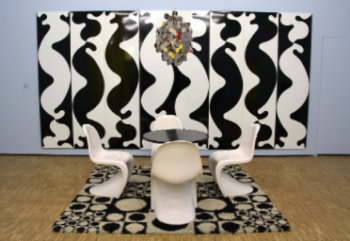
Image source:https://search.creativecommons.org/photos/a9664e03-c39c-4d88-9760-6a20e864a323 by corno.fulgur75
The comfort of this chair results from the combination of a cantilever structure with an anthropomorphic shape and a slightly flexible material. It can be used individually or in groups and is suited for indoor and outdoor environments. The Panton Chair has received numerous international design awards and is represented in the collections of many prominent museums. Its expressive shape has made it an icon of the twentieth century.
Concept
Verner Panton was one of the most influential figures in the development of design during the 1960s and 1970s. Along with his experimental approach to forms and colours, he was captivated by the potential of plastic, a novel material at the time. His aim was to create a comfortable chair made in one piece that could be used anywhere. After searching for a manufacturer for several years, Panton came into contact with Vitra in 1963. Together they developed the Panton Chair, which was first presented in 1967.
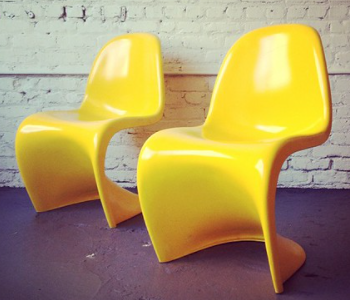
Images source: https://search.creativecommons.org/photos/95170e51-0430-40e4-a9d0-3eff3a2eb098 by Paris on Ponce & Le Maison Rouge
History of the Panton Chair
1967/68 Initial series production from cold-moulded, fibre-glass reinforced polyester resin, painted in various colours.
1968-1971 The second series model made of polyurethane rigid foam, painted in various colours.
1971-1979 The third series model made of coloured thermoplastic polystyrene. The chairs made of this material can be identified by the ridges below the bend between the seating area and the base.
1979-1983 The Panton Chair was not in production.
1983 to present day Second version of the chair made of painted polyurethane rigid foam. This series can be identified by Panton’s signature on the base.
1999 to present day Fourth series model made of coloured polypropylene.
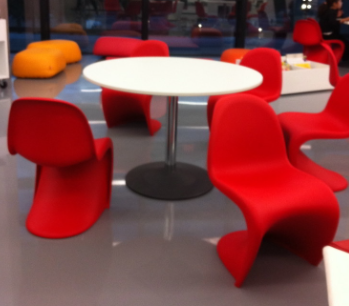
Image source: https://search.creativecommons.org/photos/c41f0a3e-f47b-45af-a902-8b2a59525367 by charlotte henard
2005 to present day Panton Junior made of coloured polypropylene (a smaller version of the Panton Chair made to scale for children from the age of three).
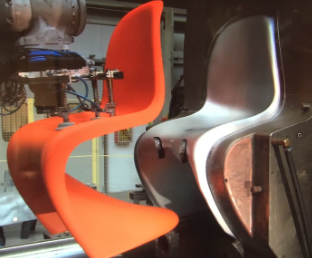
Image source: https://search.creativecommons.org/photos/9900dbdb-7fe6-4e21-9c1a-c3229cabe785 by GVolumen
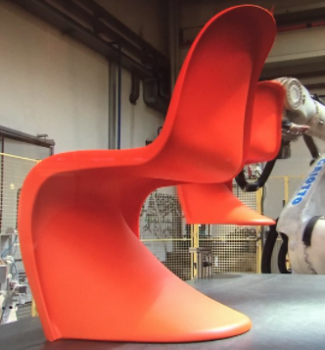
Image source: https://search.creativecommons.org/photos/110e0f50-cc01-4958-b9de-66149909c407 by GVolumen
Revolutionary Appeal
After nine years of experimentation, the Panton Chair was finally unveiled in 1967, just at the right time that had seen many other revolutions in the design world. At that time, known as S-Chair, it was produced by Vitra in fiberglass reinforcement, and it was immediately transformed into a symbol of freedom in the 60s, with its colorful, luminous, sexy and sinuous shape, which was right to conceive the human body. With its fresh and youthful appearance, it came to symbolize the Pop Art movement. Panton himself made sure that his chair was produced in a rainbow of colors, so his consumer could choose the perfect color for them.
Since the late 90s, when the charm of Verner Panton has been rediscovered and his designs have been praised again, the Panton Chair has experienced a revival. It has been transformed into an icon, a rockstar. A new technology has made it possible to produce it in polypropylene, making it economical, light and accessible. Vitra began to reproduce the chair and this time, in various scales, including miniatures. The chair has received international awards, represented in many museum collections, and began in a series of appearances on the covers of the best fashion magazines in the world, best remembered by the cover of British Vogue in 1995 with Kate Moss wearing a bright pink lipstick, sitting on a perfect tomato colored Panton Chair.
Design
Verner Panton.
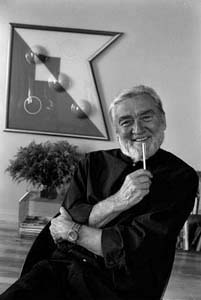
Image source:https://en.wikipedia.org/wiki/Verner_Panton#/media/File:Verner_Panton_(1996)_by_Erling_Mandelmann.jpg
Manufacturer
Vitra.
Material
Polypropylene.
Dimensions
(83 x 50 x 61 cm)
Info source: https://www.vitra.com/en-us/product/panton-chair-classic
Info source: https://www.finnishdesignshop.com/furniture-chairs-vitra-panton-panton-chair-white-p-8959.html
Info source: http://www.daniellaondesign.com/blog/the-panton-chair-an-icon
Info source: https://www.vitra.com/en-br/product/panton-chair
Info source: http://www.verner-panton.com/furniture/archive/7/
